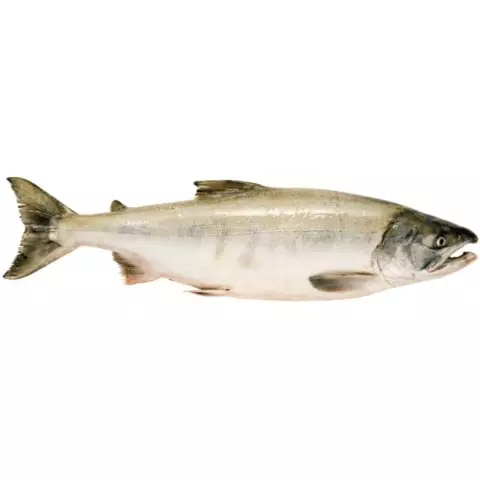- Author Rachel Wainwright [email protected].
- Public 2023-12-15 07:39.
- Last modified 2025-11-02 20:14.
Calorie content of asparagus
Asparagus is a versatile plant that is used for culinary, medicinal and ornamental purposes. People have known about the beneficial properties of asparagus since ancient times. In ancient Egypt, this plant was in special honor, the image of asparagus was even applied to monuments. The inhabitants of Ancient Rome grew asparagus on their backyards.

Asparagus can be white or green. White asparagus is especially popular in Germany. It has softer shoots and a more delicate taste. White asparagus has more calories than green because of its higher sugar content. To make the plant white, its shoots and rosette are completely covered with soil. Asparagus shoots without sunlight do not produce photosynthesis. Due to its relatively low calorie content, asparagus has a high dietary value.
Composition, benefits and calories of asparagus
With a low calorie content, asparagus is an excellent source of minerals, vitamins, carbohydrates, proteins and other useful components. Its shoots and roots include B vitamins, vitamins A, K and E. The plant contains manganese, folic acid, potassium, copper, carotene, coumarin, riboflavin, dietary fiber and other useful compounds. The calorie content of asparagus is much lower than that of other vegetables. The low calorie content of asparagus (30 kcal per hundred grams of young shoots) is explained by the fact that it is 93% water. It contains practically no fat, carbohydrates - 4.5%, protein - 1.9%.
Despite the number of calories in asparagus, this plant contains a sufficient amount of healthy carbohydrates. This means that this product can give the necessary energy boost to the human body for the whole day.
Since asparagus contains coumarins and, given how many calories there are in asparagus, it is especially useful to use it for cardiovascular diseases. Coumarins are known to regulate blood clotting. They prevent blood clots from forming in blood vessels. Potassium, which is also found in significant quantities in the product, has a beneficial effect on blood vessels and heart. Plant carotenes help prevent cancer and improve vision. Asparagus saponins, when they enter the stomach, irritate its mucous membrane, and this leads to an increase in the function of all glands. Asparagus has a beneficial effect on the condition of the kidneys, liver, genitourinary and nervous system. With regular use, this product significantly relieves the condition of bronchopulmonary diseases.
Due to its low calorie content, asparagus is excellent for diet food. The nutritional properties of the product are high, so it is very useful to include it in the diet after serious illnesses, operations, as well as during pregnancy. When combined with other products, asparagus does not lose its healing properties.
Asparagus in nutrition
Freshly harvested asparagus has the highest nutritional value and excellent taste. It is customary to eat young shoots of this plant. The optimal time for removing it from the garden is May-June. In terms of the number of calories, fresh frozen asparagus does not differ from fresh product. Canned, frozen asparagus has many health benefits, although it is no longer as nutritious or tasty.
The preparation methods for this product are varied. The calorie content of asparagus directly depends on the cooking method. It is steamed, grilled or in oil, boiled. Some people use the plant in its raw form, which allows them to get all the available trace elements and vitamins in full. When cooked, the number of calories in asparagus increases, and the amount of useful components decreases. The plant can be used as a side dish or main dish, it is added to various sauces, soups, salads.
Useful properties and calorie content of Korean asparagus
Korean asparagus (yuka, fuzhu, soy asparagus) is a semi-finished soy product, a popular dish of national Chinese cuisine. In Russia, this product is also called the Chinese fern. In terms of calories, soy asparagus is significantly superior to true asparagus. It is made from soy milk. When boiled, a film (fupi) forms on the milk surface. When dried, the film takes on an elongated shape. The resulting product is called asparagus in Korean. With a low calorie content, Korean asparagus is a protein concentrate that contains essential amino acids.
Since the calorie content of soy asparagus is approximately 234 kcal per hundred grams of finished product, it can be included in vegetarian and lean menus in order to compensate for the protein deficiency.
Eating soy asparagus is beneficial for the prevention of cancer and cardiovascular diseases.

Although the calorie content of soy asparagus is low, it is advisable to consume it in moderation. Since soy contains phytoestrogens, daily use of this product increases the risk of developing thyroid diseases in women.
Korean Asparagus Recipe
To cook Korean asparagus, you need one hundred grams of dry soy asparagus, one small clove of garlic, a small amount of soy sauce and vegetable oil, a little seasoning and pepper sauce.
Pour boiling water over dry asparagus (semi-finished soy) and let it brew for about an hour. At the same time, in a preheated frying pan, fry the onion, cut into half rings in vegetable oil. Add pepper sauce, chopped garlic, one tablespoon of soy sauce there, and fry everything thoroughly.
Then add all the ingredients to the asparagus, having previously filtered the product from water. Then add seasoning and let cool.
Due to its low calorie content, Korean asparagus can be used in dietary meals. Fresh garlic lowers cholesterol levels, lowers blood pressure, and improves immunity. Onions in soy asparagus reduce swelling, stimulate appetite, and stimulate peristalsis.
Found a mistake in the text? Select it and press Ctrl + Enter.






